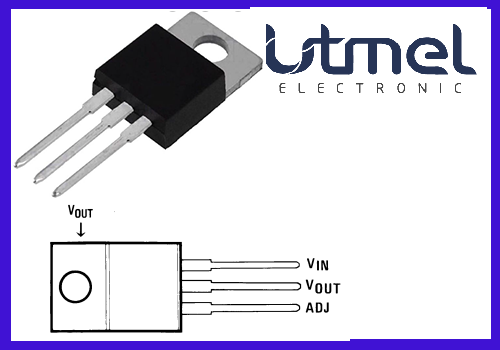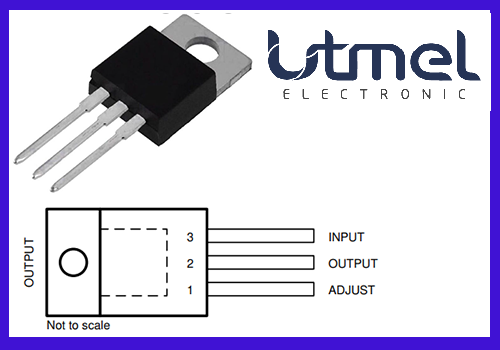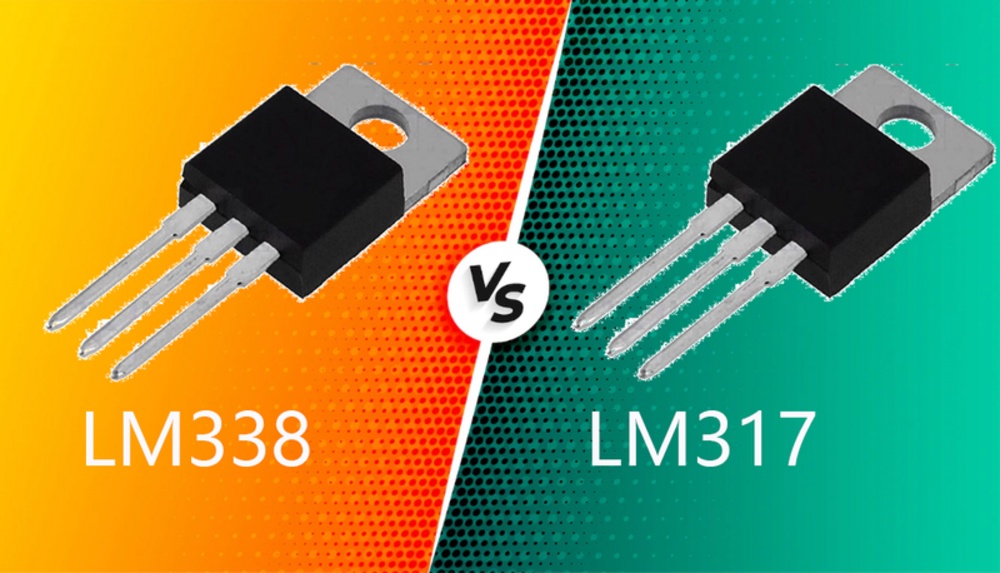Overview of LM338
Over a 1.2-V to the 32-V output range, the LM338 adjustable 3-terminal positive voltage regulator can produce more than 5 A. They're really simple to use, with only two resistors needed to set the output voltage. Load and line regulation are equivalent to many commercial power sources, thanks to careful circuit design. The LM338 is packaged as a typical three-lead transistor.
Time-dependent current limiting is a unique characteristic of the LM338. For brief periods of time, the current limit circuitry allows peak currents of up to 12 A to be pulled from the regulator. This enables the LM138 to handle high transient loads and speeds up start-up under full load.

Overview of LM317
The LM317 is a three-terminal positive voltage regulator with an output voltage range of 1.2 to 37 V and a maximum current of 1.5 A. The output voltage is set with only two external resistors, making this voltage regulator extremely simple to use. Internal current limiting, thermal shutdown, and safe area compensation are also included, making it virtually blowout-proof.
The LM317 can be used for a variety of purposes, including local, on-card regulation. By putting a set resistor between the adjustment and the output, this device can also be used to build a programmable output regulator.

LM338 VS LM317 Features
LM338 Features
- Specified 7-A Peak Output Current
- Specified 5-A Output Current
- Adjustable Output Down to 1.2 V
- Specified Thermal Regulation
- Current Limit Constant With Temperature
- P* Product Enhancement Tested
- Output is Short-Circuit Protected
LM317 Features
- Output Current in Excess of 1.5 A
- Output Adjustable between 1.2 V and 37 V
- Internal Thermal Overload Protection
- Internal Short Circuit Current Limiting Constant with Temperature
- Output Transistor Safe−Area Compensation
- Floating Operation for High Voltage Applications
- Eliminates Stocking many Fixed Voltages
- Available in Surface Mount D2PAK−3, and Standard 3−Lead Transistor Package
- NCV Prefix for Automotive and Other Applications Requiring Unique Site and Control Change Requirements; AEC−Q100 Qualified and PPAP Capable
- These Devices are Pb−Free, Halogen Free/BFR Free, and are RoHS Compliant
Conclusion of LM338 VS LM317
The LM317 and LM338 are two adjustable linear voltage regulators that are nearly identical. But from the specifications of LM338 VS LM317, we can see that the LM317 has a higher output voltage of 37V than the LM338 with an output voltage of 32V. The specified reference voltages between the LM338 and LM317 in the datasheets varied by 10 mV. The reference voltage of LM338 is 1.29V, whereas the reference voltage of LM317 is 1.3V. The operating temperature of LM338 and LM317 are both from 0°C to 125°C. Because both chips are internally dissipation limited, the power dissipation for both parts must also be taken into account to prevent the over-temperature from causing bad operations.
If you want to learn more, try to follow the below link to see the article about the LM338 VS LM317.


No comments yet